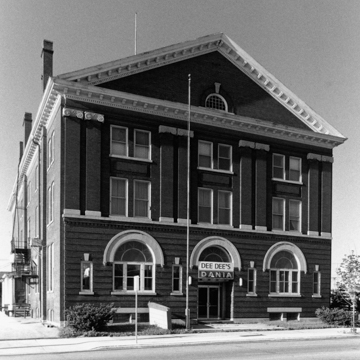Racine once claimed to be “the most Danish city in America.” Beginning around 1850, thousands of Danish immigrants settled here, many drawn by the prospect of factory jobs. At least two leading manufacturers, the J. I. Case Company (RA21), which recruited workers in Denmark, and the Mitchell Wagon Company, employed Danes almost exclusively. Nearly every sign on State Street bore a Danish name. The immigrants worked hard to preserve their Danskhed, or Danishness, which gave rise to the formation of the Dania Society, founded in 1867 to promote Danish language study. Its hall also housed a library and hosted a choir, a dramatic club, and social functions.
Curiously, when the Dania Society needed a new hall in 1904, members chose a Beaux-Arts classical design—at that time, the style most strongly associated with the American mainstream. The taste for colorful national styles was passé, and perhaps the society’s objectives had shifted toward cultural assimilation. Dania Hall’s classical features include symmetrical composition, arched windows with prominent stone heads, paired brick Ionic pilasters, and a bracketed pediment. Only the word “Dania” above the entrance reveals the ethnic association of this building, now a restaurant.















